The 2020 Spirit of Flight Awardees are Aviation Explorer Post #9, Chicago’s Leading Edge Chapter - Women in Aviation International and Southwestern Illinois College Aviation Program.
Aviation Explorer Post #9
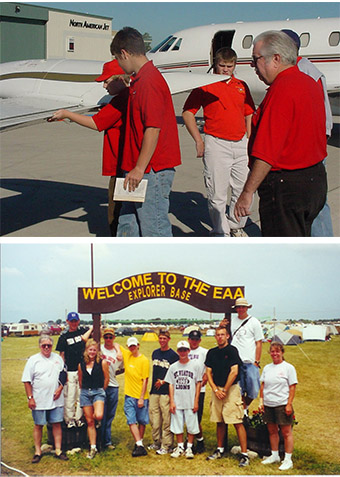
Aviation Explorer Post #9 is a coeducational youth program for high school and college age students interested in aviation and careers in aviation. The Post #9 is organized under the Learning for Life Program organized by the Boy Scouts of America (BSA).
The primary objective of Post 9 is to enable youth to explore various aviation careers to determine whether or not that career is right for them. With a focus on exploration, the goal is not to push youth into a particular path, but to let them know what options are available to them. Adult leaders share their enthusiasm for aviation and give a realistic picture, good and bad, of what the careers entail.
An even more important objective is to produce the next generation of the aviation community. Whether or not an individual pursues a career in aviation, they learn through the Post the joys and benefits of aviation.
Former members give back by volunteering with aviation groups including EAA AirVenture. They spread enthusiasm about aviation by talking with their friends and taking their children to airshows and exhibitions. Most of all, they support airports and their users.
Explorer Post 9 was founded in the fall of 1995 by Illinois Aviation Hall of Fame inductee Doug Powers. Since the beginning, Doug has remained active as the Post Advisor. Post 9 is also sponsored by Windy City Aviation and Dean Ellis, its founder and CEO.
Explorer Post 9 has had over 110 members since its founding. As the only Explorer Post in the Chicago area, members are drawn from more than 40 communities. The average member spends three years in the Post. Some past members have gone on to careers as pilots, mechanics and aerospace engineers. Other members have chosen not to pursue a career in aviation, avoiding a later change in college major and the expenses and disappointments thereof.
The Illinois Aviation Hall of Fame commends Aviation Explorer Post 9 for their efforts in mentoring our youth and sharing an appreciation of aviation with members and their families.
Chicago’s Leading Edge Chapter – Women in Aviation International

Chicago’s Leading Edge Chapter of Women in Aviation International (WAI) was founded in October 2009 by a FedEx Captain and an Assistant Chief Pilot at Lewis University and serves the greater Chicagoland area. The organization provides networking, education, mentoring and scholarship opportunities for women (and men) who are striving for challenging and fulfilling careers in aviation.
One of the chapter’s proudest accomplishments is the annual aviation day camp for young girls. The program, known as “Sky’s the Limit” originated in 2012 in conjunction with Lewis University. It is a free, (including lunch) all day event where the participants rotate through various workshops including ATC, dispatch, pre-flight and flight simulators. The chapter now hosts one hundred participants every year and WAI has adopted the format to create the International Girls in Aviation Day worldwide.
Another major activity for the chapter is hosting their annual fundraising event which has raised thousands of dollars to provide deserving applicants with award money to attend the annual Women in Aviation International Conference and scholarships for flight training.
The Chicago’s Leading Edge Chapter currently has one hundred and fifty official members and an email list of over three hundred. Membership is free for anyone in Illinois and just requires a current membership with WAI. The chapter has become a contact point for many other organizations seeking to engage young people in different fields of aviation and is often advertises or participates in these events.
The Illinois Aviation Hall of Fame commends the Chicago’s Leading Edge Chapter of Women in Aviation for their avid support of aviation in Illinois.
Southwestern Illinois College (SWIC)

Southwestern Illinois College (SWIC) aviation program has a 50 year history serving the southwestern Illinois region. SWIC programs offer opportunities for aviation students to obtain their flight or aviation maintenance training in a university environment at a reduced cost while living in the Greater St. Louis area. The campus buildings are located in Granite City, Illinois and flight training is conducted at St. Louis Downtown Airport (CPS) in Cahokia, Illinois.
SWIC offers degree and certificate programs for pilot training, airport management and aircraft maintenance. Pilot training is available for private, instrument and commercial certificates in single and multi-engine aircraft and helicopters. The programs are partnered with the aviation program at SIU Carbondale (SIU-C) and courses taken at SWIC are fully transferable to SIU Carbondale, offering the opportunity to get part of a four year degree program at a reduced course cost and closer to home. An extension of the SIU-C campus is also available at SWIC, allowing students to complete certain four year programs for less money while living at home.
SWIC’s Granite City program began in 1968 as a two year Associates Degree program with two airplanes and two instructors operating at the old Collinsville Downtown Airport. In 1969, flight training operations were moved to the Bi-State Airport (now St. Louis Downton Airport) in Cahokia Illinois. The program expanded to include airframe and powerplant maintenance training and more aircraft for flight training.
In 1977, the facility at Bi-State Airport burned to the ground, destroying all but a few of the 10 training aircraft. The maintenance facility and much of the classroom teaching materials were also destroyed. Teaching facilities were rebuilt and housed for several years in an old school building in Cahokia, Illinois. The flight program moved back finally to what was now St. Louis Downtown Airport, first located in the historic Curtiss-Wright Hangar One, and then later moving to Hangar 10 across the airport. The maintenance program was moved to the SWIC Granite City Sam Wolf Campus. Both the pilot training and maintenance programs continued to grow and expand through the 1980s.
In the 1990s, a new administration decided that SWIC should become more of a Liberal Arts College, and eliminated the aviation flight program and the new avionics program. A few years later, these decisions were reversed, and the pilot training and avionics programs were reinstated. At this time, the AAS Degree in Aviation Management was developed in conjunction with SIU Carbondale. The joint agreement with SIU-C opened the door to further agreements establishing a pathway for SWIC students to transfer course credits earned in any of the SWIC aviation programs fully to SIU-C, creating a path toward a Bachelor of Science Degree.
Additional agreements between SWIC and SIU-C created the SIU-C Extended Campus Program at the Belleville SWIC Campus, enabling students to complete SIU-C 4 year aviation degrees from that location. This relationship continues to develop to this day, opening the door to reduced cost aviation degrees to Illinois residents from the St. Louis collar counties.
SWIC is deeply involved in high school outreach programs, supporting a number of STEM and career programs every year. The events take place at a number of area high schools, museums and airports and provide opportunities to talk to numerous students about aviation careers. SWIC has also participated in Young Eagles events sponsored by the Greater St. Louis Air and Space Museum and EAA Chapter 64 as well as events sponsored by Women in Aviation and the Greater St. Louis Business Aviation Association.
The Illinois Aviation Hall of Fame commends SWIC for its efforts providing aviation training and education at a reduced cost to Illinois residents, and for its efforts at community outreach and education.
2021 Hall of Fame Inductees:
Rob Mark
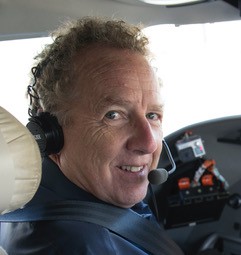 Rob Mark has made his “mark” on the aviation world work as a writer, editor and blogger. Currently Senior Editor for Flying magazine, and publisher of Jet Whine blog, Mark shares his passion for aviation with all of us. Rob Mark has made his “mark” on the aviation world work as a writer, editor and blogger. Currently Senior Editor for Flying magazine, and publisher of Jet Whine blog, Mark shares his passion for aviation with all of us.
A veteran of the United States Air Force, Rob Mark returned from four years of service in Viet Nam to become an air traffic controller at Palwaukee Airport (now Chicago Executive Airport) in Wheeling Illinois. He worked for the FAA for 10 years as a controller and then as a supervisor.
Mark earned his private pilot certificate at the old Sky Harbor Airport, and then while working as a controller completed his instrument, commercial license and multi-engine training with Priester Aviation, and then added on his certified flight instructor airplane, instrument and multi-engine at DuPage. He began flying business jets from Palwaukee and Waukegan Airports, both as a Part 91 pilot and as an on-demand Part 135 charter pilot. He later flew turboprops for the original Midway Airlines out of Midway Airport. While gaining all of this experience in aviation, Rob Mark also wrote articles for aviation publications.
After Midway Airlines closed, Rob Mark decided to return to school, earning a Master’s Degree from Northwestern University’s Medill School of Journalism. He later returned to Northwestern for six years to teach in the journalism program. Needing to reduce his flying time and use his writing skills, Mark created CommAvia, a media company that handled public relations for a number of airports around the country. CommAvia handled public relations for Chicago Executive Airport (formerly Palwaukee Airport) between 2002 -2007 and again from 2013- 2018. During this time period, he created an educational outreach program between the airport and the local high school district.
During the CommAvia years, Mark continued to write articles for AOPA Pilot, Air Line Pilot and Flying magazines. After 25 years in the public relations business, Mark closed CommAvia to accept a position as senior editor with Flying magazine, more recently acting as the magazine’s editor in chief. In 2009 and 2018, he received the NBAA’s Gold Wing award for Outstanding Journalism.
On a local note, Mark has served on the board of the Chicago Executive Pilots Association (CEPA) for several years, presenting programs for pilots at the CEPA monthly meetings and their IMC Club meetings. Most recently, he lead a team of six people in developing a plan of action and providing constant public pressure to convince the airport board of Chicago Executive Airport not to close Runway 6/24. He also provides support for the 99s Chicago Aviation EXPO and IFR/VFR seminar programs, and has provided photography and publicity for the 99s Annual Girl Scout Aviation Badge Day on several occasions.
The Illinois Aviation Hall of Fame honors Rob Mark for his contributions to aviation journalism on a national level, and his local Illinois contributions to aviation programs and the Chicago Executive Pilots Association.
John Richard (Rick) Reed
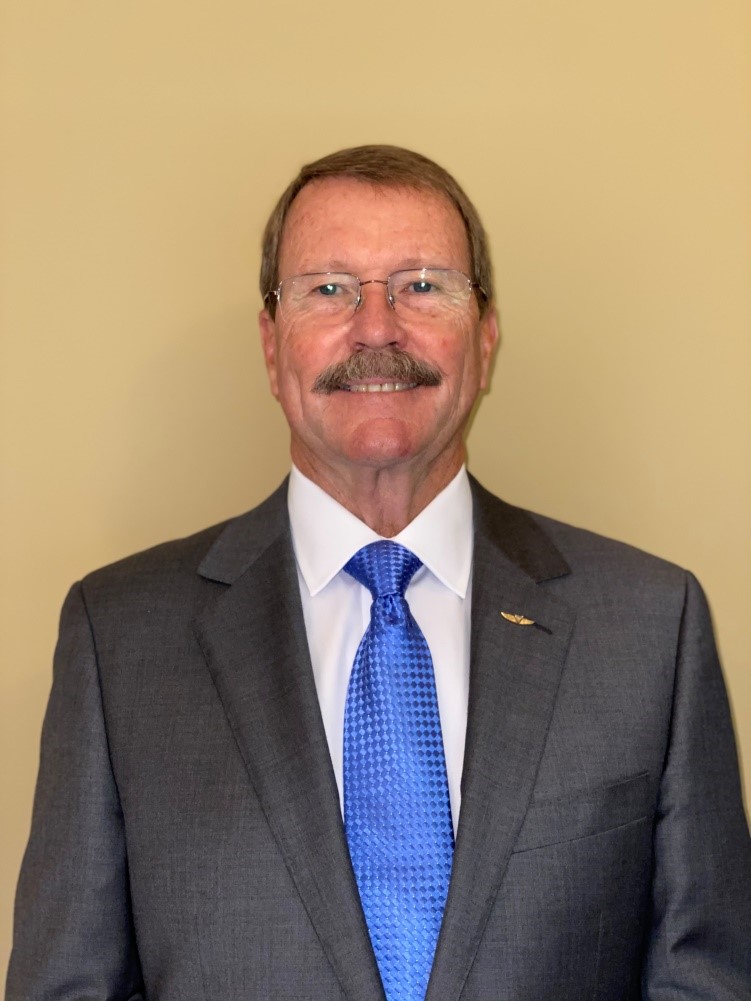 For over 40 years, Rick Reed has been the voice of agricultural aviation in the state of Illinois. Raised on a farm in Ashmore, Illinois, Reed earned a degree in Agricultural Economics from the University of Illinois in 1970. He then served as a U.S. Army Field Artillery Officer until 1975, when he returned to Illinois and started his agricultural flying business, Rick’s Fly-On Farming. For over 40 years, Rick Reed has been the voice of agricultural aviation in the state of Illinois. Raised on a farm in Ashmore, Illinois, Reed earned a degree in Agricultural Economics from the University of Illinois in 1970. He then served as a U.S. Army Field Artillery Officer until 1975, when he returned to Illinois and started his agricultural flying business, Rick’s Fly-On Farming.
As he gained experience in aerial application, it became clear to Reed that a strong, united voice was essential for the agricultural aviation to thrive and gain respect. He joined the Illinois Agricultural Aviation Association (IAAA) and by 1982, had held all of the offices in IAAA and was elected to the National Agricultural Aviation Association. In 1983 the IAA created the non-expiring position of Executive Director for Reed to expand his leadership of the association and the agricultural aviation industry. It was a non-paying position.
Reed served as Executive Director of IAAA for 35 years, retiring in 2018. He became the liaison between the agricultural aviation industry and the Illinois Legislature, Department of Agriculture, Illinois EPA and other state regulatory agencies. He lobbied in Springfield, testified in legislative hearings and helped write key legislation pertaining to the industry. He is a recognized expert on aerial applications for Illinois agriculture.
Reed’s commitment to the industry was felt at the national level as well. He served as Vice President and later, President of the National Agricultural Aviation Association (NAAA). He was on the Board of Directors of NAAA for a total of 15 years. He also served two years as a Director of the National Agricultural Aviation Research and Education Foundation (NAAREF). He was appointed to the National pesticide User’s Research and Regulatory Forum (PURF) by the United States Environmental Protection Agency (USEPA) in 1988, and also served at the request of the National Association of State Departments of Agriculture (NASDA) to help design a national exam for licensing aerial applicators. He has served on the selection board of the National Agricultural Aviation Museum Hall of Fame, and was elected Chairman in 1994 and reconfirmed every year through 2018, when he formally retired.
Reed mentored individuals seeking to become aerial applicators. He is still on the list of recommended mentors offered by the National Agricultural Aviation Association, and a number of his mentees have become aerial applicators and run successful spraying businesses.
The Illinois Aviation Hall of Fame honors Rick Reed for his contributions to Illinois aviation, and for his service in agricultural aviation at both the state and national level.
2020 Hall of Fame Inductees:
Giles Henderson
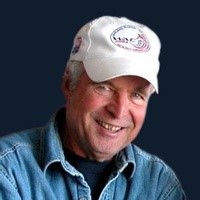 Giles Henderson is best known for his contributions to the International Aerobatic Club (IAC). He competed in the Sportsman Class as an aerobatic pilot for many years, winning a number of trophies and awards. In the 1990’s he stopped competing and became a contest judge. Through his performing and judging years, he served as a mentor and advisor to many individual pilots and competition teams. Giles Henderson is best known for his contributions to the International Aerobatic Club (IAC). He competed in the Sportsman Class as an aerobatic pilot for many years, winning a number of trophies and awards. In the 1990’s he stopped competing and became a contest judge. Through his performing and judging years, he served as a mentor and advisor to many individual pilots and competition teams.
Henderson paid for flying lessons and his first airplane working after school as a line boy in Great Falls, Montana. He accumulated over 300 hours as a student pilot waiting to take his check ride on his 17th birthday. He worked as an agricultural pilot to help pay for tuition while as an undergraduate student at Montana State University. He later completed a Ph.D. in molecular physics at Indiana University followed by an academic career in quantum mechanics and spectroscopy at Eastern Illinois University in Charleston, Illinois.
Henderson started flying competition aerobatics in 1967 in a J-3 Cub. He was recognized by the EAA for having won more Sportsman category aerobatic contests that any other pilot in the world. He has also been awarded the L. Paul Soucy award 4 times, which recognizes the aerobatic pilot that has acquired the highest percentage of possible points in a contest season. Henderson also used his famous clipped wing Cub to fly low level exhibition airshows.
Henderson served as president of IAC Chapter 61 for several years. He provided aerobatic instruction, coached and mentored numerous pilots starting their own aerobatic careers, and was a guest speaker at many aviation events. Skydiving was also one of his passions, and he often volunteered his time and piloting skills to take jumpers aloft. Unfortunately, Henderson lost his life in a skydiving accident in December of 2017.
The Illinois Aviation Hall of Fame honors Giles Henderson for his contributions to Illinois aviation and offers our condolences to his family and friends.
James (Jim) Klick
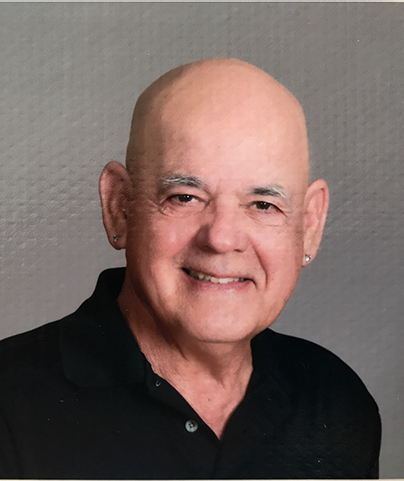
Jim Klick is perhaps best known for his support of both the National Intercollegiate Flying Association (NIFA) and the International Aerobatic Club (IAC). In 1995, Klick became involved with NIFA, the National Intercollegiate Flying Association, when Lewis University hosted a regional competition and he was asked to assist as a judge. He has been judging regional and national NIFA contests ever since. He has worked as a Regional Judge for NIFA’s Region 8, which handles competitions between university flight teams from Illinois, Indiana, Kentucky and Tennessee. He also volunteers as a judge at NIFA National SAFECON events.
An avid aerobatic pilot who has a significant history of competing in IAC competitions is in his Pitts S1S, he is an expert on the Aresti system that is used to judge competition aerobatics. He has served as a judge for the IAC for many years. He received the Robert Heuer Award for Judging Excellence in 2004. Klick has mentored many IAC Sportsman competitors and university flight teams. He is a past president and officer of IAC Chapter 1.
Klick is also very active with the Boy Scouts and provided major organizational support for the flight activities at the Rainbow Council Boy Scout’s Airfest 2014 at Lewis University Airport. Airfest hosted several thousand scouts at this event which encourages scouts to consider careers in science, technology engineering and math. Additionally, Klick serves as an Aviation Merit Badge Councilor.
The Joliet Regional Port District board is the governing body for Lewis University Airport. Klick has served as a board member for the last 8 years and has also been deeply involved in public events held at the airfield. He is also the airport representative for the AOPA Airport Support Network.
The Illinois Aviation Hall of Fame honors Jim Klick for your service to the Lewis University Airport, IAC, NIFA and the Rainbow Council Boy Scouts.
Kenneth (Ken) Rapier
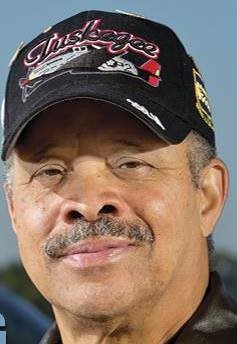
Ken Rapier is best known for his years of service as President of the Chicago “DODO” Chapter of the Tuskegee Airmen Inc. (CDCTAI). In this role, Rapier has worked to champion the cause of and advance the legacy of the original Tuskegee Airmen, both in the Chicago chapter and at the national level.
The stated goal of the Chicago Chapter of Tuskegee Airmen is to “preserve the legacy of the Tuskegee Airmen and promote post-secondary education to your and careers in the aerospace industry”. For Ken Rapier and the members of the Chicago Chapter, this includes numerous public speaking events and special programs to honor the original Tuskegee Airmen and other key Black aviators such as Bessie Coleman. Current educational programs include the Aviation Career Education (ACE) Academy, a week long summer camp held at Lewis University every summer to introduce inner city students to flying and aviation related careers. Ken Rapier and the Chicago Chapter are considered “Strategic Partners” in Tuskegee Next, an 8 week summer program based at DuPage Airport that provides, pilot training, life skills and educational assistance to groups of disadvantaged teens.
The Chicago Chapter has sponsored Young Eagles programs for many years, offering flights to young people at Meigs Field, later at the Gary Airport, DuPage Airport and at Bult Field in Monee Illinois. By 2013, the Chicago Chapter had flown over 14,000 Young Eagles rides, and EAA’s Sean Tucker presented Ken Rapier with a leather bomber jacket for personally flying over 1,000 Young Eagle rides.
Born and raised on the south side of Chicago, Rapier grew up watching “Sky King”. Related to one of the original Tuskegee Airmen, his interests naturally turned to aviation. He completed an AAS Degree in Aviation from Daley College, and an AAS degree in Electronics from Olive Harvey College, and a Bachelor’s Degree at Governor State University. He holds FAA certified flight instructor certificates and an ATP, and has flown over 5,000 flight hours and is type rated in the DC-9. He is also a qualified formation flight leader.
After painting his airplane to replicate the World War II paint scheme of the Tuskegee Airmen and changing the registration number to match their Fighter Group number, 332ND, Rapier began serving as the Chief Pilot for the Tuskegee Airmen’s Young Eagles Program. His airplane is nicknamed the “Flying Billboard”. His formation flying team has been featured at the last five Rockford Air Fests and opened 8 of the 10 Gary Air Shows. This dedication earned Ken the Tuskegee Airmen Central Regional President’s Award and the highest civilian honor given by the Tuskegee Airmen, the Brigadier General Noel F. Parrish Award. Rapier was recognized as an Honored Role Model at the twentieth annual Heroes in the Hood Awards program in April of 2013.
The Illinois Aviation Hall of Fame honors Kenneth Rapier for his 25 year plus service to the Chicago “Dodo“ Chapter of Tuskegee Airmen International, his service to the aviation community in Illinois and his tireless efforts to provide opportunity for disadvantaged young people.
Wilbur Louis Smith
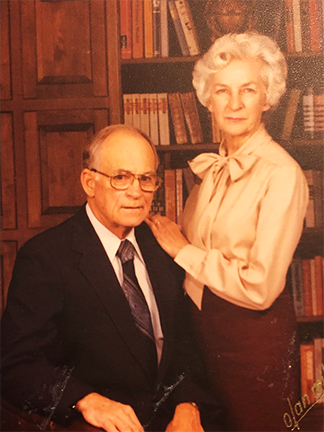
Wilbur Louis Smith was an aviation pioneer, inventor, aircraft builder/restorer, mentor and founding member of two Illinois EAA Chapters. He earned his private pilot license in 1939 and in 1942 enlisted in the Army Air Corp. Being 28, he was deemed too old to fly overseas, so he was commissioned to train younger men. At the end of the war, he returned home to Bloomington, Illinois.
A retail store manager by trade, his hobby was designing and building aircraft. He was a master woodworker. He had helped his friends build a Pietenpol Sky Scout, so it was natural that once Paul Poberezny founded the Experimental Aircraft Association in 1953, Smith would become involved.
Smith designed and built his first his first experimental all wood aircraft in the family basement. He later flew his airplane to EAA events in Milwaukee to share his woodworking skills with others. He regularly attended the national EAA events, volunteering and sharing his knowledge of aircraft design and construction at member seminars. The aircraft that Smith designed became known as the Smith Termite. Smith sold plans for the Termite, and built wing and tail assemblies for it as well. These items were sold mostly to other EAA members through his small company, “Wilbur Smith’s Termite Aircraft”. The original Termite is on display at the Oregon Space Museum in Eugene Oregon.
In 1956 Smith, along with other aviation friends, felt a need to establish a local EAA chapter. In March of 1957, EAA Chapter 29 based in Champaign, Illinois was approved. Smith was a charter member, and later served as president of the chapter. As a founding member, he also served as a lead volunteer with the chapter events including pancake breakfasts, fly-ins and fly-outs. When there was a chapter event, Smith was there to help. From 1959 until the late 1990’s Smith volunteered each year to help with planning, setup, fly-in activity and seminars at EAA Air Venture.
Many of the EAA chapter 29 members lived in Bloomington and regularly traveled to Champaign for chapter events and meetings. In 1962, Smith and others from the Bloomington area fulfilled EAA requirements to start a Bloomington EAA chapter. It was designated as EAA Chapter 129. Smith was their first president and served in all leadership positions over the next 40 years.
In the 1980’s Smith, along with Marion McClure, Bob Ryburn and fellow EAA members volunteered their time and expertise to restore the Tilbury Flash Midget Air Racer that had been owned by Art Carnahan. The Flash was designed by Owen Tilbury, a Bloomington Engineer, and with Art Carnahan flying it, took second place in the 1933 Chicago American Air Races. The aircraft was later found stored in a barn in McLean County. Smith was selected to restore the wings because of his expertise in woodworking. The beautifully restored Tilbury Flash now hangs from the ceiling of the terminal building at Central Illinois Regional Airport in Bloomington.
The Illinois Aviation Hall of Fame honors the memory of Wilbur Louis Smith for exemplifying the spirit of the EAA by designing, building and restoring aircraft, sharing his skills and mentoring others, and supporting aviation events both locally and nationally.
Lt. Col William R. Thompson
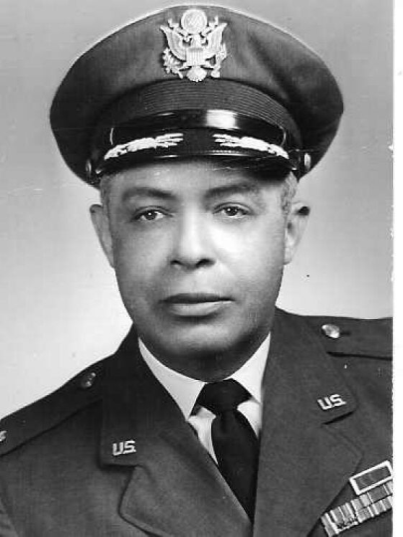
Lt. Colonel William Thompson was born in Pennsylvania and served in World War II as a pilot in the 99th Pursuit Squadron (Tuskegee Airmen). He came to Chicago after the war and taught for 25 years in the Chicago Public Schools. He was also well known for his work with the Chicago “DODO” Chapter of the Tuskegee Airmen Inc. as a mentor, public speaker and a past president.
Lt. Col. Thompson received his Bachelor’s degree in business administration from Hampton University in Virginia. During his senior year be became a licensed pilot. After graduation, he moved to Chicago to participate in the Coffey School of Aeronautics. He then enlisted in the U.S. Army Air Corps and was assigned to Chanute Air Base in Rantoul as one of six aviation cadets that were trained in flight, aircraft armaments, communications, engineering and maintenance. His specialty was armaments and upon graduation from training was promoted and assigned to Benjamin O. Davis staff as the Aircraft Armament Officer, helping to form the 99th Fighter Squadron.
Lt. Col. Thompson was an avid photographer, and became the unofficial photographer for the 99th Pursuit Squadron. His photography work has given us a unique view of the Tuskegee Airmen in action and at rest, and he worked with others to preserve the legacy through his photographic exhibit which is on display at the Tuskegee Airmen National Museum in Detroit and the National Air and Space Museum in Washington DC.
After the war, Lt. Col. Thompson continued his service as a member of the United States Air Force Reserves, completing the Academic Instructor program at Air University, Maxwell Air Base in Alabama for aviation and education. He retired from the Reserves in 1976 with the rank of Lieutenant Colonel received a teaching certificate from Chicago Teachers College and taught in the Chicago Public schools for 25 years, mostly at Donoghue Elementary School.
Lt. Col. Thompson’s love of flying never subsided. He shared his joy through a Tuskegee Airmen program that provided airplane rides for children. He encouraged his students to pursue math science and aviation. Eager to share his experience with others, he recruited minorities to attend the Air Force Academy and served as president of the Chicago “DODO” Chapter of the Tuskegee Airmen Inc (TAI). He helped organize a program that gave young people airplane rides at Meigs Field in Chicago. This program later became part of the Chapter’s Young Eagles program.
He worked actively during his retirement to preserve the legacy and mission of the Tuskegee Airmen in many capacities and made many public appearances in and outside the Chicago area sharing his experiences. Sadly, Lt. Col Thompson passed away in 2006.
The Illinois Aviation Hall of Fame honors him for his contributions to Illinois aviation and to the legacy of the Tuskegee Airmen and we offer our condolences to his friends, family and fellow members of the TAI community.
|
